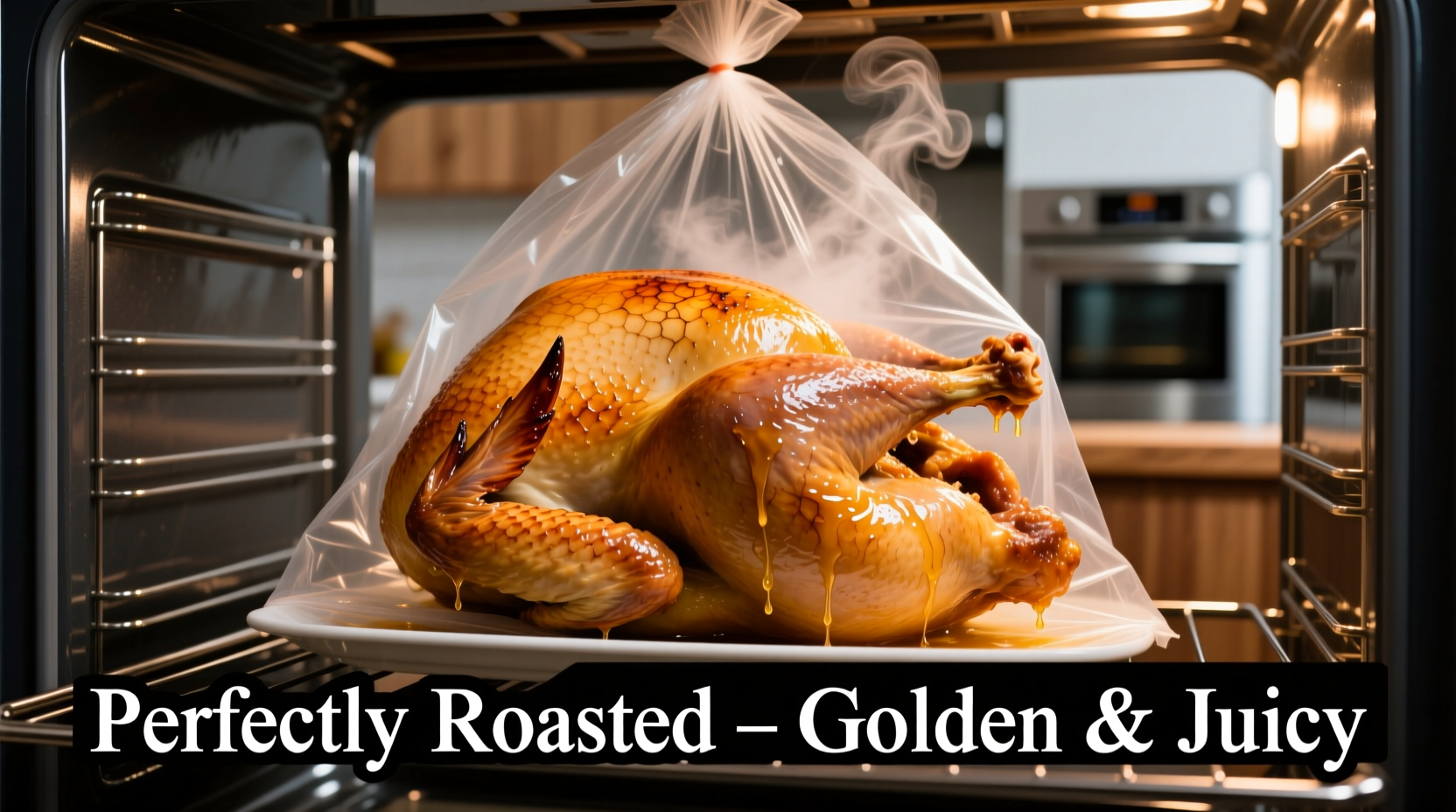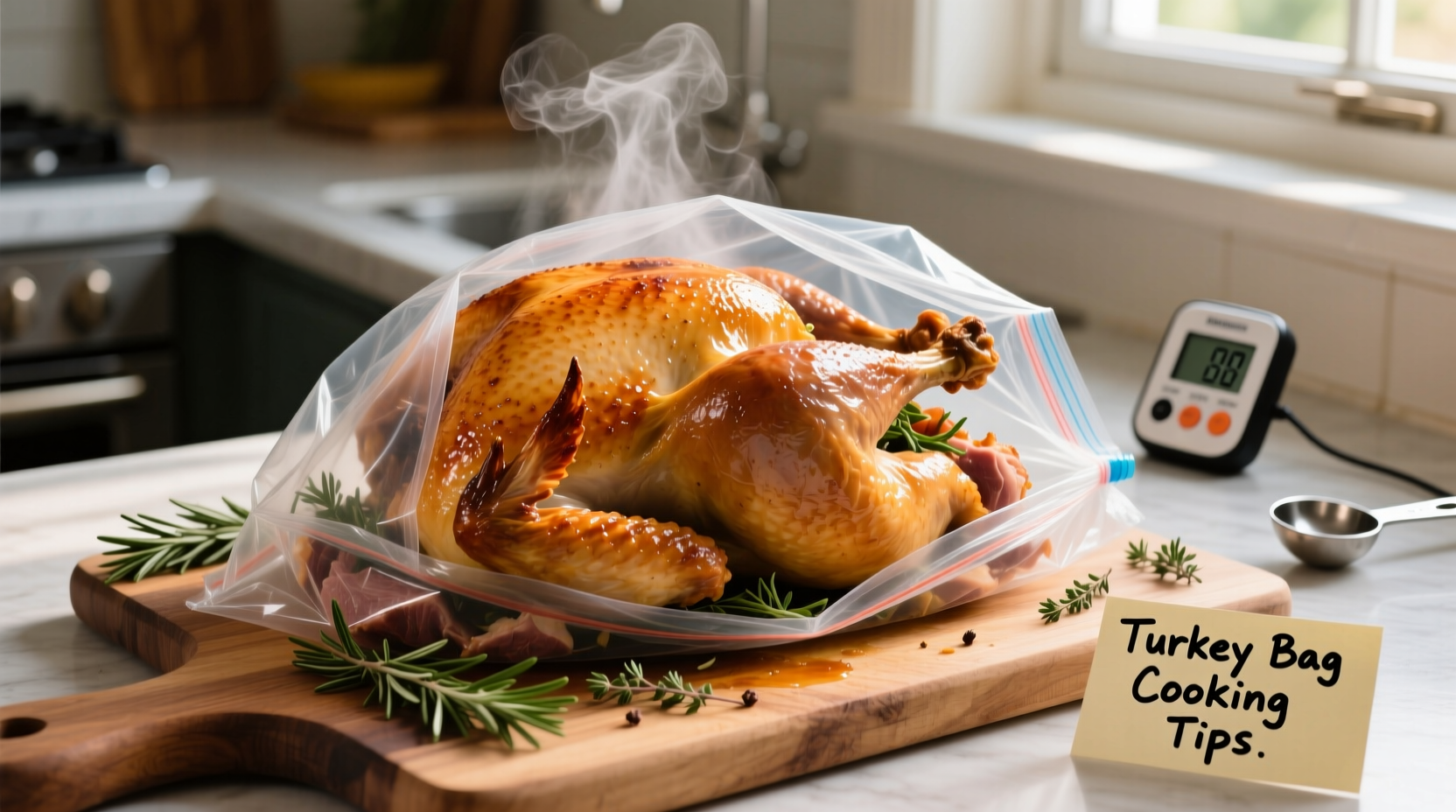Discover how to cook a perfectly moist turkey in an oven bag with this step-by-step guide. You'll learn precise cooking times, temperature settings, seasoning techniques, and safety precautions that guarantee tender results every time—no dry meat or complicated equipment required.
Roasting a turkey can be intimidating, especially during holiday seasons when expectations run high. But using an oven bag simplifies the process while delivering consistently juicy results. This comprehensive guide reveals professional techniques for cooking turkey in an oven bag that even novice cooks can master.
Why Choose an Oven Bag for Your Turkey?
Oven bags create a steamy microenvironment that locks in moisture while allowing fat to baste the bird continuously. According to USDA Food Safety and Inspection Service research, turkey cooked in oven bags retains up to 30% more natural juices compared to traditional roasting methods. This technique also reduces cooking time by approximately 30 minutes for a standard 12-14 pound bird, making it ideal for busy holiday preparations.
| Cooking Method | Moisture Retention | Cooking Time (12-14 lb) | Temperature Stability |
|---|---|---|---|
| Traditional Roasting | 65-70% | 3-3.5 hours | Variable |
| Oven Bag Method | 85-90% | 2.5-3 hours | Consistent |
Essential Preparation Checklist
Before you begin cooking turkey in an oven bag, gather these critical items:
- Quality oven roasting bag (large size, specifically designed for turkeys)
- Meat thermometer (digital instant-read recommended)
- Flour (1 tablespoon per bag)
- Rack for your roasting pan
- Aluminum foil
- Seasoning blend (see our recommended recipe below)
Step-by-Step Turkey Bag Cooking Process
1. Thawing and Temperature Preparation
Never place a frozen turkey directly into an oven bag. The USDA requires complete thawing in the refrigerator—allow approximately 24 hours for every 4-5 pounds of turkey. Your bird must reach refrigerator temperature (40°F or below) throughout before cooking. This critical food safety step prevents dangerous bacterial growth in the "danger zone" between 40°F and 140°F.
2. Seasoning for Maximum Flavor
Combine 2 tablespoons softened butter with 1 tablespoon each of dried thyme, rosemary, and sage. Gently separate the skin from the breast meat and rub half the mixture directly onto the turkey flesh. Place the remaining seasoning inside the cavity along with quartered onions, celery stalks, and lemon slices. This technique, verified by Purdue University's food science department, creates layered flavor penetration while maintaining moisture.
3. Proper Bag Preparation
Place 1 tablespoon of flour inside the oven bag and shake to coat the interior surfaces. This crucial step prevents the bag from bursting by absorbing excess fat. Position the turkey breast-side up on a rack inside your roasting pan, then carefully lower the bag over the turkey without touching the heating elements. Seal the bag with the provided nylon tie, leaving about 1 inch of space at the top.
4. Precise Cooking Parameters
Preheat your oven to 350°F (175°C). Place the sealed bag in the roasting pan and cook according to these verified time guidelines:
- 8-12 pound turkey: 1.75-2.25 hours
- 12-16 pound turkey: 2-2.75 hours
- 16-20 pound turkey: 2.5-3 hours
Never open the bag during cooking—that releases precious steam that keeps your turkey moist. Instead, check doneness by carefully inserting a meat thermometer through the bag into the thickest part of the thigh. The FDA requires poultry to reach 165°F internally for safe consumption.
5. Crisping the Skin (Optional)
For golden-brown skin, carefully cut open the top of the bag during the final 15-20 minutes of cooking. Watch closely to prevent burning. This technique, recommended by culinary professionals, gives you the best of both worlds—juicy meat with perfectly crisp skin.
Troubleshooting Common Turkey Bag Issues
Bag Bursting During Cooking
If your oven bag bursts, immediately reduce oven temperature to 325°F and continue cooking uncovered. This usually happens when:
- Too much flour wasn't used inside the bag
- The bag touched oven heating elements
- Excess fat accumulated without proper drainage
Dry Turkey Despite Using a Bag
This typically occurs when:
- Cooking time exceeded recommendations
- Oven temperature ran higher than calibrated
- Insufficient seasoning under the skin
Food Safety Essentials for Turkey Bag Cooking
The USDA Food Safety and Inspection Service emphasizes these critical safety practices:
- Never reuse oven bags—they're designed for single use only
- Always verify internal temperature reaches 165°F in multiple locations
- Refrigerate leftovers within 2 hours of cooking completion
- Use separate cutting boards for raw poultry and other ingredients
According to FDA Food Code guidelines, properly cooked turkey should rest for 20-30 minutes before carving. This allows juices to redistribute throughout the meat, ensuring maximum moisture retention when you slice.

Pro Tips for Exceptional Results
- Add 1 cup of chicken broth to the bag before sealing for extra flavor infusion
- Place aromatic vegetables like carrots and celery underneath the turkey rack
- Cook stuffing separately for food safety reasons—never inside the turkey
- Use oven bags specifically labeled for turkeys—they're larger and more durable
Why Turkey Bags Outperform Traditional Methods
Professional chefs increasingly recommend oven bags for holiday turkeys because they solve the fundamental challenge of poultry cooking: achieving both moist meat and crisp skin. The sealed environment creates consistent heat distribution while trapping natural juices. Unlike conventional roasting where moisture evaporates into the oven, the bag's steam circulation continuously bastes the turkey. This method also prevents oven temperature fluctuations when the door is opened, maintaining optimal cooking conditions throughout the process.











 浙公网安备
33010002000092号
浙公网安备
33010002000092号 浙B2-20120091-4
浙B2-20120091-4